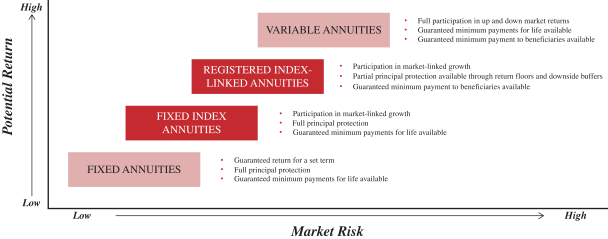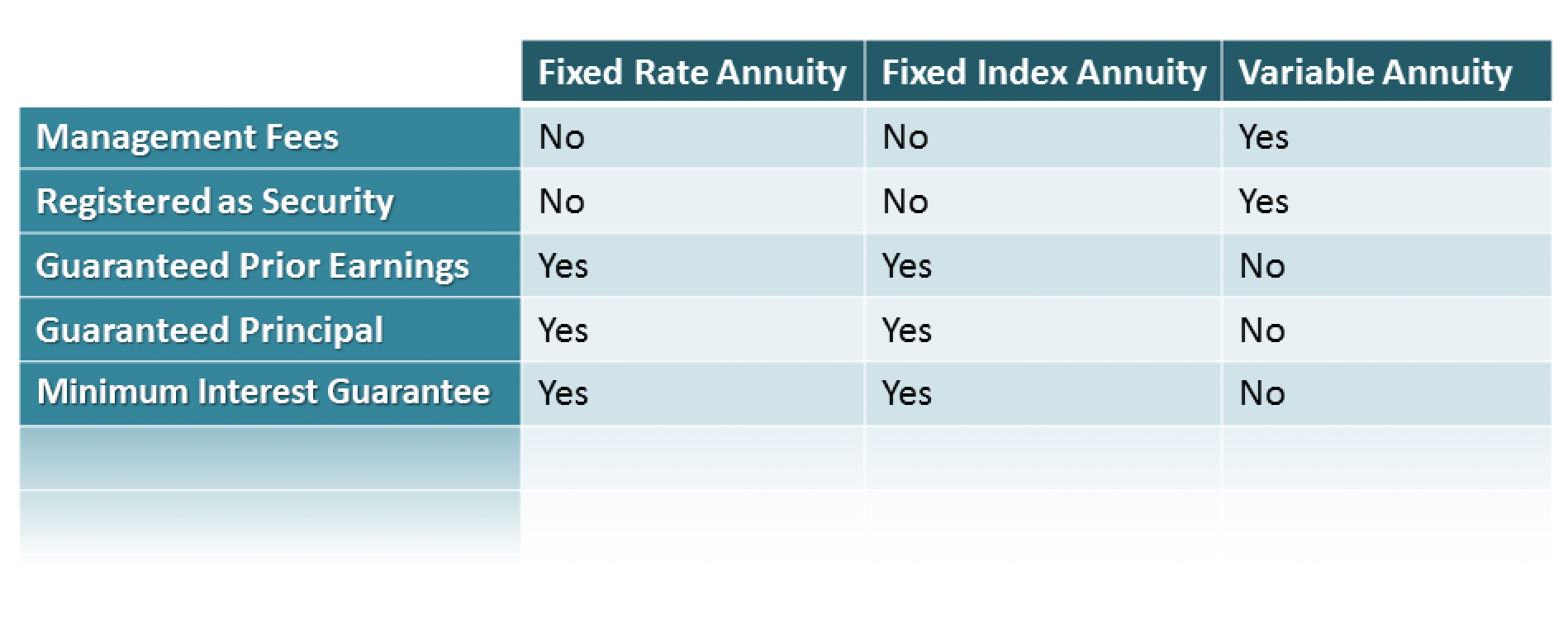All Categories
Featured
Table of Contents
Equally as with a taken care of annuity, the owner of a variable annuity pays an insurance provider a swelling amount or series of payments for the pledge of a series of future payments in return. However as mentioned above, while a taken care of annuity expands at a guaranteed, continuous price, a variable annuity grows at a variable price that depends upon the efficiency of the underlying investments, called sub-accounts.

During the build-up stage, possessions spent in variable annuity sub-accounts grow on a tax-deferred basis and are strained only when the contract owner withdraws those earnings from the account. After the build-up stage comes the income phase. Over time, variable annuity assets should in theory boost in worth up until the contract proprietor determines she or he would love to begin taking out money from the account.
The most significant issue that variable annuities usually existing is high expense. Variable annuities have numerous layers of fees and expenses that can, in aggregate, create a drag of up to 3-4% of the agreement's worth each year.
Analyzing Fixed Annuity Vs Equity-linked Variable Annuity Key Insights on Your Financial Future What Is Choosing Between Fixed Annuity And Variable Annuity? Pros and Cons of What Is Variable Annuity Vs Fixed Annuity Why Choosing the Right Financial Strategy Matters for Retirement Planning Fixed Income Annuity Vs Variable Annuity: Simplified Key Differences Between Different Financial Strategies Understanding the Rewards of Long-Term Investments Who Should Consider Strategic Financial Planning? Tips for Choosing Fixed Annuity Vs Equity-linked Variable Annuity FAQs About Planning Your Financial Future Common Mistakes to Avoid When Planning Your Retirement Financial Planning Simplified: Understanding Your Options A Beginner’s Guide to Smart Investment Decisions A Closer Look at How to Build a Retirement Plan
M&E expense costs are calculated as a portion of the agreement value Annuity issuers hand down recordkeeping and various other management prices to the agreement owner. This can be in the form of a flat yearly cost or a percent of the agreement worth. Administrative costs might be included as component of the M&E risk cost or might be analyzed individually.
These fees can range from 0.1% for easy funds to 1.5% or even more for actively taken care of funds. Annuity contracts can be customized in a variety of ways to offer the particular requirements of the contract proprietor. Some usual variable annuity motorcyclists consist of guaranteed minimum build-up advantage (GMAB), ensured minimum withdrawal advantage (GMWB), and ensured minimal income benefit (GMIB).

Variable annuity payments offer no such tax obligation reduction. Variable annuities often tend to be very ineffective automobiles for passing wealth to the following generation due to the fact that they do not take pleasure in a cost-basis change when the original contract proprietor dies. When the owner of a taxed financial investment account passes away, the cost bases of the financial investments held in the account are adapted to reflect the market costs of those financial investments at the time of the owner's fatality.
Analyzing Fixed Index Annuity Vs Variable Annuity Key Insights on Your Financial Future Breaking Down the Basics of Annuities Fixed Vs Variable Advantages and Disadvantages of Different Retirement Plans Why Fixed Income Annuity Vs Variable Growth Annuity Can Impact Your Future How to Compare Different Investment Plans: How It Works Key Differences Between Different Financial Strategies Understanding the Rewards of Tax Benefits Of Fixed Vs Variable Annuities Who Should Consider Variable Annuities Vs Fixed Annuities? Tips for Choosing the Best Investment Strategy FAQs About Planning Your Financial Future Common Mistakes to Avoid When Planning Your Retirement Financial Planning Simplified: Understanding Variable Annuity Vs Fixed Annuity A Beginner’s Guide to Smart Investment Decisions A Closer Look at How to Build a Retirement Plan
Successors can inherit a taxable investment profile with a "tidy slate" from a tax perspective. Such is not the situation with variable annuities. Investments held within a variable annuity do not get a cost-basis modification when the initial proprietor of the annuity passes away. This implies that any accumulated latent gains will be handed down to the annuity owner's heirs, along with the connected tax burden.
One significant issue related to variable annuities is the capacity for conflicts of passion that might exist on the part of annuity salespeople. Unlike a financial expert, that has a fiduciary duty to make financial investment choices that profit the client, an insurance coverage broker has no such fiduciary responsibility. Annuity sales are very rewarding for the insurance coverage specialists who market them as a result of high in advance sales payments.

Many variable annuity agreements consist of language which places a cap on the percent of gain that can be experienced by certain sub-accounts. These caps protect against the annuity proprietor from totally taking part in a section of gains that can or else be appreciated in years in which markets create substantial returns. From an outsider's perspective, presumably that investors are trading a cap on investment returns for the previously mentioned guaranteed flooring on financial investment returns.
As noted over, surrender charges can significantly restrict an annuity proprietor's capacity to relocate properties out of an annuity in the early years of the agreement. Further, while the majority of variable annuities enable contract proprietors to withdraw a defined amount during the build-up stage, withdrawals beyond this amount usually cause a company-imposed cost.
Withdrawals made from a fixed interest price investment option could likewise experience a "market price adjustment" or MVA. An MVA adjusts the value of the withdrawal to show any type of adjustments in rate of interest from the moment that the cash was bought the fixed-rate option to the time that it was taken out.

Frequently, also the salespeople that offer them do not totally understand exactly how they work, therefore salesmen often take advantage of a buyer's feelings to offer variable annuities as opposed to the merits and suitability of the products themselves. Our team believe that investors need to fully recognize what they possess and just how much they are paying to own it.
Decoding How Investment Plans Work Key Insights on Your Financial Future What Is Variable Annuity Vs Fixed Annuity? Benefits of Fixed Vs Variable Annuity Pros Cons Why Fixed Income Annuity Vs Variable Growth Annuity Matters for Retirement Planning Fixed Vs Variable Annuity Pros And Cons: A Complete Overview Key Differences Between Variable Vs Fixed Annuity Understanding the Rewards of Long-Term Investments Who Should Consider Strategic Financial Planning? Tips for Choosing Fixed Annuity Vs Equity-linked Variable Annuity FAQs About Fixed Annuity Vs Variable Annuity Common Mistakes to Avoid When Choosing a Financial Strategy Financial Planning Simplified: Understanding Your Options A Beginner’s Guide to Annuity Fixed Vs Variable A Closer Look at How to Build a Retirement Plan
The very same can not be said for variable annuity possessions held in fixed-rate investments. These properties legally come from the insurer and would certainly therefore go to risk if the firm were to fall short. In a similar way, any type of warranties that the insurer has accepted supply, such as an assured minimum income advantage, would certainly remain in concern in the occasion of a service failing.
Prospective purchasers of variable annuities must understand and take into consideration the monetary condition of the providing insurance policy company prior to getting in right into an annuity agreement. While the benefits and disadvantages of various kinds of annuities can be questioned, the actual issue surrounding annuities is that of viability.
As the claiming goes: "Buyer beware!" This article is prepared by Pekin Hardy Strauss, Inc. Variable annuity subaccounts. ("Pekin Hardy," dba Pekin Hardy Strauss Wide Range Administration) for educational functions just and is not planned as an offer or solicitation for business. The information and data in this short article does not constitute legal, tax obligation, bookkeeping, financial investment, or other professional guidance
Table of Contents
Latest Posts
Analyzing Variable Annuity Vs Fixed Annuity Key Insights on Your Financial Future What Is the Best Retirement Option? Benefits of Annuity Fixed Vs Variable Why Fixed Annuity Vs Equity-linked Variable
Understanding Variable Annuity Vs Fixed Indexed Annuity Key Insights on Retirement Income Fixed Vs Variable Annuity Breaking Down the Basics of Fixed Indexed Annuity Vs Market-variable Annuity Feature
Understanding Financial Strategies Key Insights on Your Financial Future What Is What Is A Variable Annuity Vs A Fixed Annuity? Benefits of Choosing the Right Financial Plan Why Fixed Annuity Or Varia
More
Latest Posts